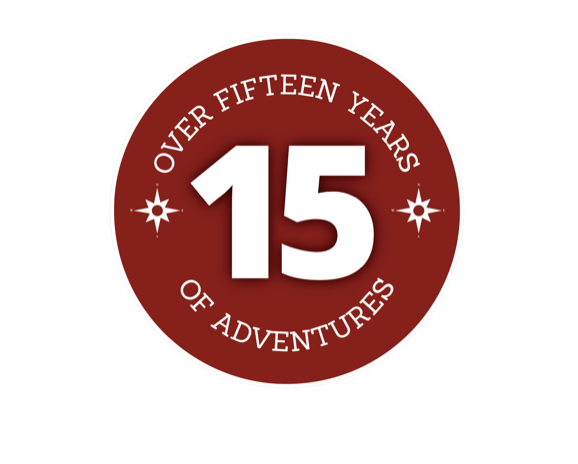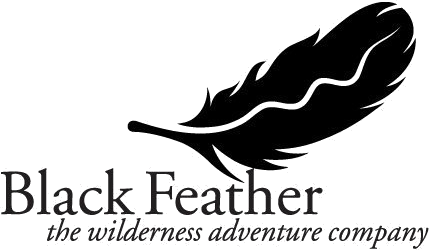Kvíar: Coastal Mountain Hut
Written by Viðar “The Red Beard” Kristinsson, Guide and Carpenter/Handy Man at Borea Adventures
Completed in 1923 by Jón Jakobsson and his family, it took two years to build the three story concrete home. The house, located in Kvíar, stands between Veyðileysufjörður and Lónafjörður, deep in Jökulfirðir, and is only accessible by boat or foot. When you arrive at the house and see the land and everything they accomplished, you begin to wonder how they ever made this happen. All the heavy materials from concrete and sand to wood and tools had to be transported by boat from the nearby town of Bolungarvík. With no electricity (or the power tools of today), everything had to be done by hand. Jón Jakobsson and his family didn’t see this as an obstacle, rather a part of their everyday life, as they adapted to their environment. The exact details of how they built the house are somewhat lost, as the family members who built and experienced the process all past away. However, there are still two members of the household that lived there as children who have been kind enough to share their experiences with us.
Work began in 1921. Using the land, the family members found the resources they needed to build their new home. Up on the mountain by Kvíar they found very flat brittle rocks to smash into smaller pieces to use for filling the concrete. For the wood they needed, the family would travel by boat or by horse to the other side of Hornstrandir and drag back driftwood that came from Siberia. The valuable and strong driftwood was both used for building their home and boats. The family set up shop building boats by the beach, their skilled craftsmanship was well known as many residents in Hornstrandir came to Kvíar for their boats.
With their big concrete home completed in 1923, Jón Jakobsson and his family moved in. Connected to the old farmhouse, which lay on the north side of the house, and living up to 20 residents, the farm began to boom. Their skill and resourcefulness continued to show in Kvíar. The river was channeled from the valley down to the house and into a single tap inside, allowing for running water. They also raised three windmills in front of the house to be used to charge batteries and listen to the radio. It is astonishing looking at the land and thinking of the times, that someone would make the decision to build a concrete house in such a location, but who ever said hard work doesn’t pay off.
There was growing concern in Hornstrandir when the remaining residents gathered to discuss the situation at hand. Hornstrandir was never thought to be an easy place to live and the locals to the area knew and accepted that fact as part of their lives. Unfortunately, over time, the difficulties that came with life in Hornstrandir began to take a toll on the residents. When the regions only doctor left, it didn’t take long for the remaining residents to follow suit. After the young women moved away, there wasn’t much left for the young men of Hornstrandir to stay for. Soon everyone was packing their bags, following the doctor and young women. In 1948 the family packed up their life, leaving Kvíar and moving into the towns in and around Ísafjörður, leaving behind the beautiful yet incredibly difficult life that came with living in the remoteness of Hornstrandir.
The house stood alone, abandoned for 64 years until the summer of 2012 when we at Borea Adventures made an agreement with the family from Kvíar. Seeing the house as a potential mountain hut in the isolated Hornstrandir region we began our efforts in fixing up the old farmhouse. Spending endless hours, days and weeks in Kvíar. Working on the place wouldn’t be easy but the rewards would be great. A plan was set in motion to repair the decaying house, while still maintaining the raw beauty that it beholds atop its post on the hill overlooking the sea.
After years, make that decades of extreme arctic weather, the house, to no surprise, held strong. Jón Jakobsson and his family knew what the elements would be like when they scouted the location for their farmhouse, building it to last, even if they didn’t. With the doors left open, windows and panels damaged and a leaking roof exposing the inside to rain and the winter snow, a lot needed to be repaired if guests were going to stay in Kvíar.
After just one summer of hard work, we were able to start using the house for the 2013 Winter/Spring season. Beginning our efforts in the summer of 2012, we have since made the house warm and dry, repairing windows, doors and the roof. We have also bolstered the comfort by adding a furnace, bunk beds and a brand new latrine (with help building from SEEDS group). The house in Kvíar offers us an opportunity to take guests on more adventures and trips around the area. From stopovers and meals on our sailing trips and day hikes, to longer stays on multi day skiing and hiking trips. Kvíar isn’t quite luxury but the beautiful location and cozy house makes for an incredible visit and even better stay.




